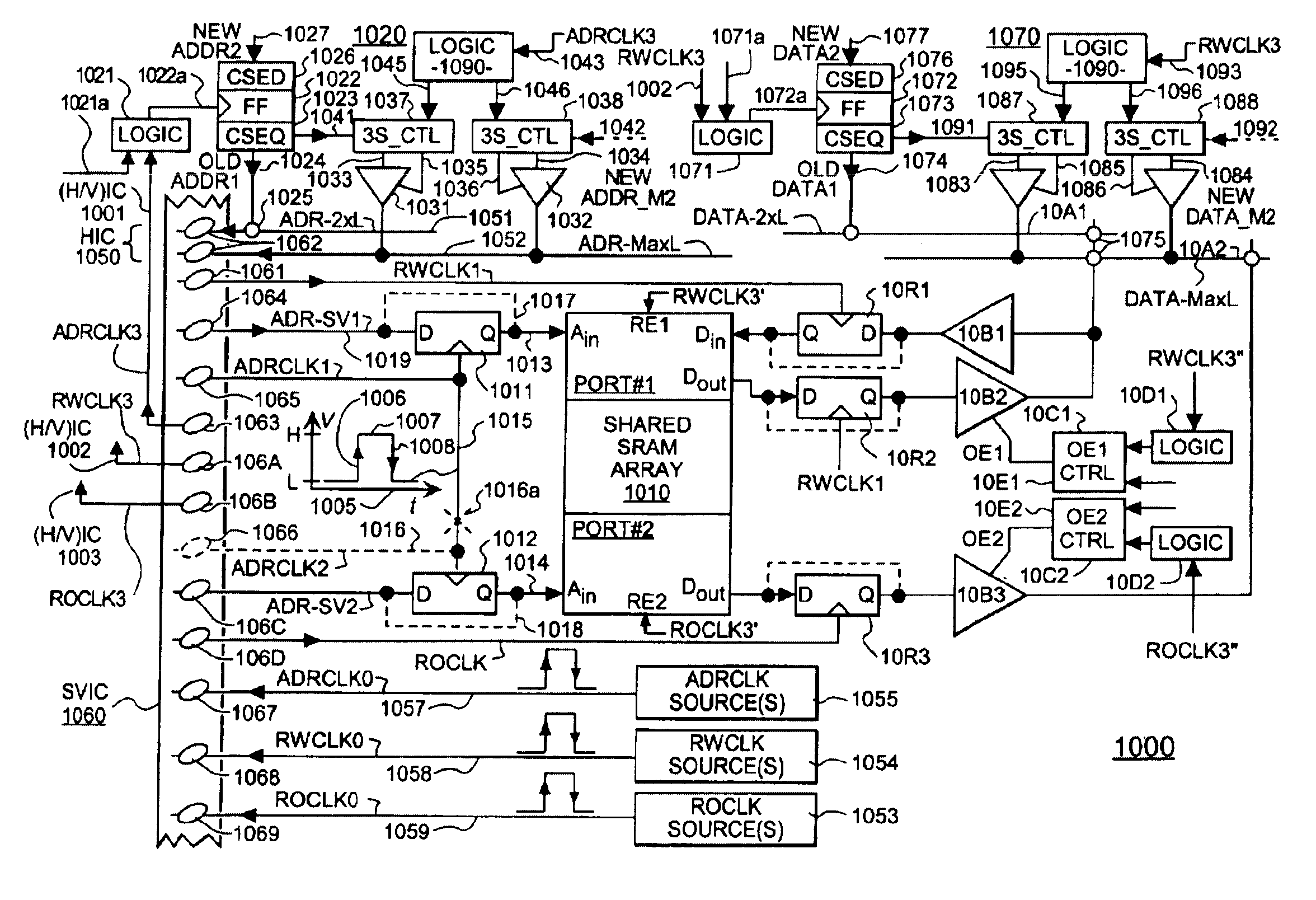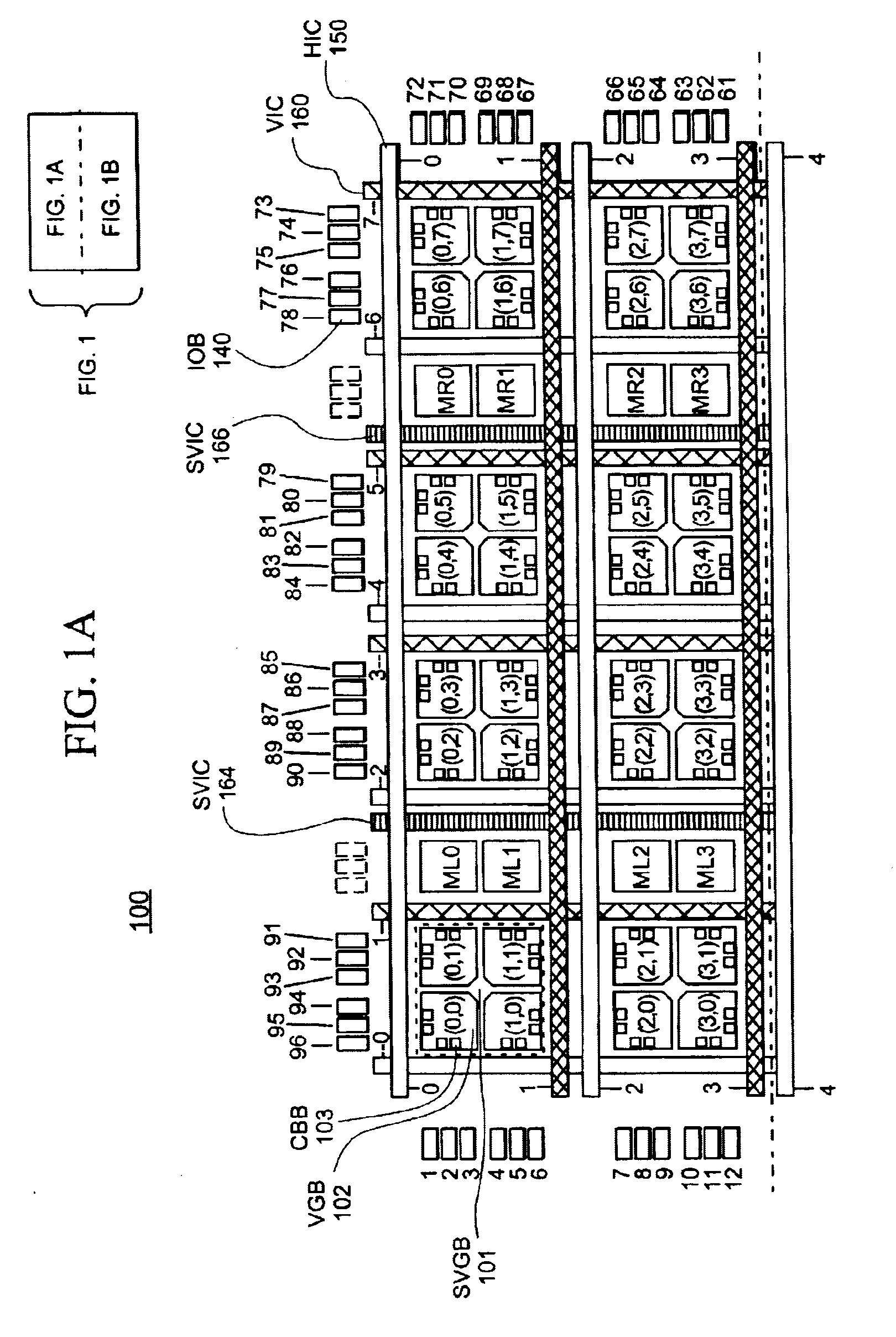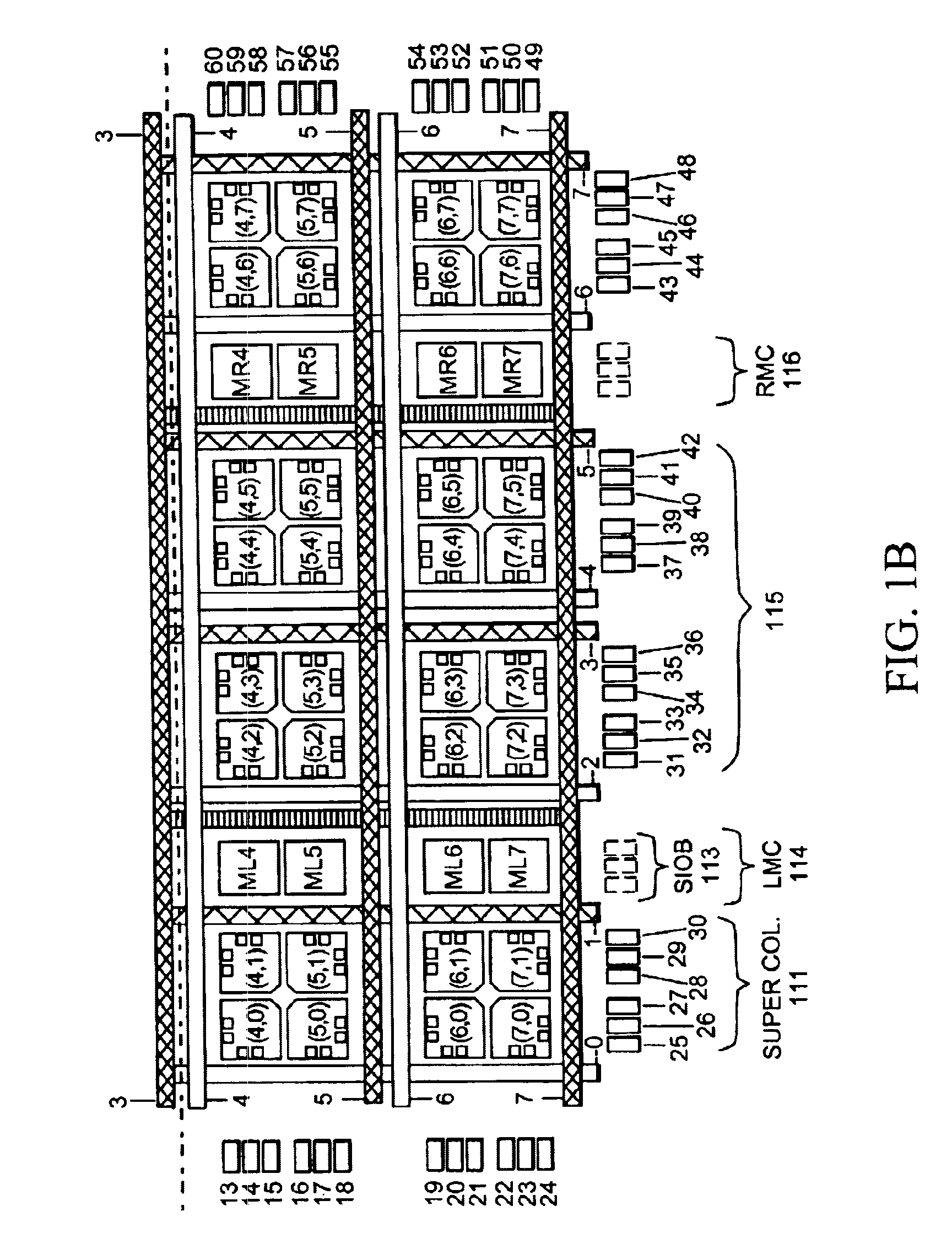FPGA integrated circuit having embedded sram memory blocks with registered address and data input sections
a technology of integrated circuits and memory blocks, applied in the field of integrated circuits, can solve the problems of limiting the ability of a given fpga architecture to implement certain speed-critical designs, unable to complete its mission successfully on a first try, and modern fpga's tend to be fairly complex, so as to maximize the data output (data reading) bandwidth of embedded memory, increase the overall system bandwidth, and maximize bandwidth
- Summary
- Abstract
- Description
- Claims
- Application Information
AI Technical Summary
Benefits of technology
Problems solved by technology
Method used
Image
Examples
Embodiment Construction
[0075]FIG. 1 shows a macroscopic view of an FPGA device 100 in accordance with the invention. The illustrated structure is preferably formed as a monolithic integrated circuit.
[0076]The macroscopic view of FIG. 1 is to be understood as being taken at a magnification level that is lower than later-provided, microscopic views. The more microscopic views may reveal greater levels of detail which may not be seen in more macroscopic views. And in counter to that, the more macroscopic views may reveal gross architectural features which may not be seen in more microscopic views. It is to be understood that for each more macroscopic view, there can be many alternate microscopic views and that the illustration herein of a sample microscopic view does not limit the possible embodiments of the macroscopically viewed entity. Similarly, the illustration herein of a sample macroscopic view does not limit the possible embodiments into which a microscopically viewed embodiment might be included.
[00...
PUM
 Login to View More
Login to View More Abstract
Description
Claims
Application Information
 Login to View More
Login to View More - R&D
- Intellectual Property
- Life Sciences
- Materials
- Tech Scout
- Unparalleled Data Quality
- Higher Quality Content
- 60% Fewer Hallucinations
Browse by: Latest US Patents, China's latest patents, Technical Efficacy Thesaurus, Application Domain, Technology Topic, Popular Technical Reports.
© 2025 PatSnap. All rights reserved.Legal|Privacy policy|Modern Slavery Act Transparency Statement|Sitemap|About US| Contact US: help@patsnap.com



